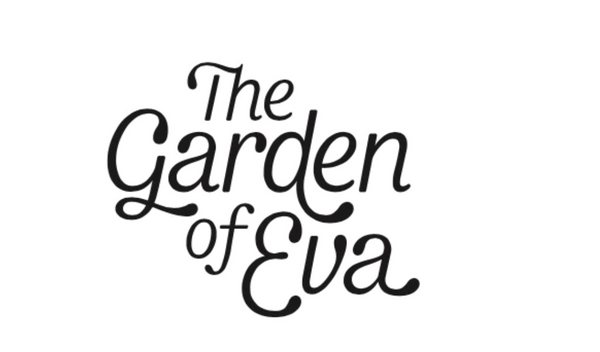My mother grew up on a hog farm in Roanoke, Virginia, which is nestled in the southwest corner of the American southern state, in the gorgeous Blue Ridge Mountains. I remember being a child, and getting excited as the car made the windy drive around hairpin turns on our way to our family’s land. Whether my mother or father was driving, each was sure to honk the horn to alert drivers coming the other way to avoid a head-on collision. There was the infamous “Tom Chisholm’s Curve.” According to Uncle Herman, “He was a big man,” and he lived right at that treacherous hairpin curve.
We would cross a small bridge over a creek and my sister and I would say, in unison, “You are now entering the Holland Estate.” It wasn’t quite an estate, but those big rolling hills, the sound of the Roanoke River behind our grandparents’ house, and all sorts of paths to explore – made it feel like an estate. We said those words with pride because we understood that it was a big deal for a black family to own property in the South during the period when my great-grandfather, Jordan Holland, and his son, acquired it. Holland was my mother’s maiden name - our clan’s grandfather was Charles Russell Holland. Granddaddy was a smart, hard-working, fiercely independent man who voted back before the Voting Rights Act of 1965 legally enfranchised millions of blacks. Granddaddy paid the infamous poll tax, which blacks in the US South had to pay in order to register to vote. He supported his wife, Eva, and their six children (Mommy was the youngest) from the fruit of the land – his prized hogs – and his job working for Norfolk and Western Railroad.
The reward for reaching The Hill, as our family land is called, was beautiful vistas over rolling hills, fresh air that you wanted to bathe in, and the not-so-pleasant scent of farm animals. Uncle Herman used to feed the pigs and hogs and as a little girl, I delighted in going with him to see “the cute pigs” that he would hold so that I could pet them. Their wiry, hard hair was in stark contrast to their cute little faces and incessant, loud squeals.
I’m too young to remember multi-generational family barbecues held around the barbecue pit that Granddaddy built on the side of the house that he built with his own hands. My sisters and cousins are lucky enough to remember those. But I do have one vague memory, whether mine or internalised as a memory from hearing countless stories, I don’t know. It’s of my mother picking crackling off a whole hog as it roasted in the red-brick barbecue pit.
Did you know that in the American South, pork and watermelon are often paired together? Both are iconic in American Southern cuisine. We know that watermelon seeds were brought to the American South by enslaved people. They were native to Africa and took well to the Southern climate. We also know that enslaved black people ate the lower quality cuts of the hog -such as the feet and hocks, as well as the ribs and pork belly. The ingenuity and creativity of enslaved black people were such that pork and watermelon became a classic pairing, with different iterations developing through the ages, and always associated with Southern cuisine.
Here’s a recipe for Southern-Style Pork Ribs, along with a special barbecue sauce recipe featuring Garden of Eva’s American Southern Chili-Watermelon Jam.
Serve the ribs with Garden of Eva’s American Southern Pickled Watermelon Rind, and sides like potato salad, a fresh salad, and corn on the cob.
Southern-Style Pork Ribs Ingredients:
For the Pork Ribs:
Pork ribs: 1.5–2 kg
Brown sugar: 60 g
Smoked paprika: 30 g
Garlic powder: 5 g
Onion powder: 15 g
Chili powder: 15 g
Cayenne pepper: 5 g (optional, for heat)
Mustard powder: 5 g
Salt: 10 g
Black pepper: 5 g
Barbecue sauce: 240 ml (recipe below)

Barbecue Sauce Recipe with Garden of Eva’s Chili-Watermelon Jam Ingredients:
Garden of Eva’s American Southern Chili-Watermelon Jam: 100 g
Tomato ketchup: 200 g
Brown sugar: 50 g
Worcestershire sauce: 30 ml
Apple cider vinegar: 30 ml
Garlic powder: 5 g
Smoked paprika: 10 g
Chili powder: 5 g
Water: 60 ml
Directions for the Barbecue Sauce:
1. Combine Ingredients:
In a saucepan, combine Garden of Eva American Southern Chili-Watermelon Jam, ketchup, brown sugar, Worcestershire sauce, vinegar, garlic powder, smoked paprika, chili powder, and water.
2. Simmer:
Place the saucepan over medium heat and simmer for 10–15 minutes, stirring occasionally until the sauce thickens.
3. Taste and Adjust:
Adjust seasoning, adding more chili powder for heat or vinegar for tanginess as needed.
Preparing the Pork Ribs:
Preheat the Oven or Grill: Preheat your oven to 300°F (150°C) or prepare your grill for indirect heat.
Season the Ribs: In a small bowl, mix the brown sugar, smoked paprika, garlic powder, onion powder, chili powder, cayenne, mustard powder, salt, and black pepper. Rub this mixture generously over both sides of the ribs.
Cook the Ribs:
For the oven: Wrap the ribs tightly in foil and place them on a baking sheet. Cook for 2.5–3 hours until tender.
For the grill: Cook over indirect heat, covered, for the same amount of time, checking occasionally.
Add Barbecue Sauce: Unwrap the ribs and brush them with barbecue sauce. If using the oven, broil for 5–7 minutes to caramelize the sauce. On the grill, cook over direct heat for 5 minutes, flipping and basting as needed.

